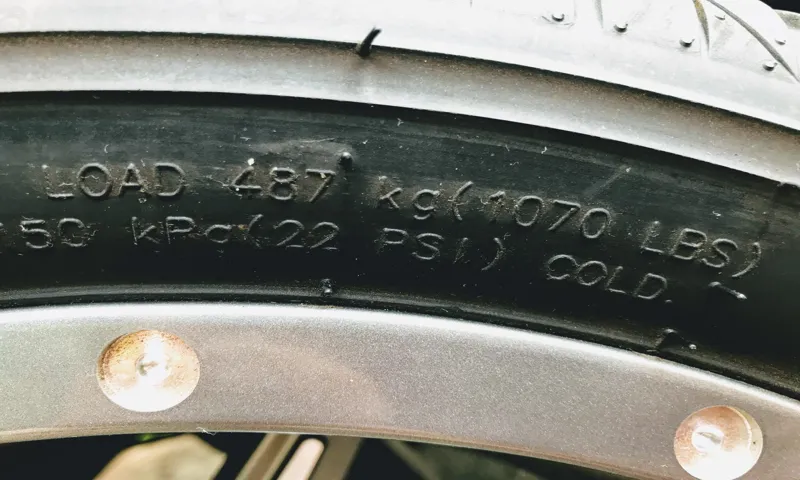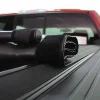If you own a golf cart or have ever taken one for a spin, you know that it’s important to keep the tires properly inflated. But just how much air does a golf cart tire actually need? While the answer may seem like common knowledge to some, it’s a question that many people may not know the answer to. In this blog post, we’ll discuss the recommended air pressure for golf cart tires and why it’s so important to maintain the proper level.
So, buckle up and get ready to learn a thing or two about golf cart maintenance!
Table of Contents
Understanding Your Golf Cart Tire
If you own a golf cart, you know how important it is to maintain its tires. One key aspect of tire maintenance is ensuring that they are inflated to the proper pressure. So, how much air should be in a golf cart tire? The answer varies depending on the type of tire and the manufacturer’s recommendations.
However, a good rule of thumb is to aim for a pressure between 18 and 22 PSI (pounds per square inch). Underinflated tires can cause unwanted wear and tear, decreased performance, and even a potential safety hazard. On the other hand, overinflated tires can lead to a rougher ride and a higher risk of a tire blowout.
To ensure that your golf cart is performing at its best, always check the recommended tire pressure and regularly inflate your tires to the recommended level.
Tire Type and Size
Choosing the right tire type and size for your golf cart can make all the difference in its performance. When it comes to tire type, there are two main options: pneumatic and solid. Pneumatic tires are air-filled and provide a smoother ride, but they require maintenance to ensure proper inflation and are prone to punctures.
Solid tires, on the other hand, are maintenance-free and puncture-resistant but can make for a bumpier ride. As for tire size, it’s essential to choose tires that are the correct height and width to fit your golf cart’s rims and suspension system, as using the wrong size can cause handling issues and safety concerns. Consult your owner’s manual or a trusted mechanic to make sure you’re choosing the right tire type and size for your golf cart.
By doing so, you’ll ensure a safer and more comfortable ride while taking your golf cart out for a spin.

Load Capacity
When it comes to choosing the right tire for your golf cart, it’s important to understand the load capacity. The load capacity refers to the weight that the tire can safely carry without causing damage or compromising performance. It’s determined by the tire’s construction, size, and recommended inflation pressure.
Putting too much weight on your tires can lead to uneven wear, reduced handling, and even a blowout on the course. Therefore, it’s essential to check your owner’s manual or consult with a professional to determine the appropriate load capacity for your golf cart. By selecting the right tire with the correct load capacity, you can improve your golf cart’s performance and ensure a safe and enjoyable ride on the greens.
Checking Your Tire Pressure
As a golf cart owner, it’s important to check your tire pressure regularly to ensure a smooth and safe ride. But how much air should be in a golf cart tire? Typically, golf cart tires require a higher pressure than your average car tire. It’s recommended to keep your golf cart tire pressure between 20 and 25 psi (pounds per square inch).
One way to check your golf cart tire pressure is to use a tire pressure gauge, which can be purchased at any auto parts store or online. Simply remove the cap from the valve stem and press the gauge firmly onto the valve to get a reading. It’s important to keep in mind that over-inflated or under-inflated tires can cause uneven tread wear and reduce the life of your tires.
So, take a few minutes to check your golf cart tire pressure regularly to ensure a comfortable and safe ride on the green.
Recommended PSI
Recommended PSI Keeping your tires at the correct pressure is essential for both the longevity and safety of your vehicle. The recommended PSI, or pounds per square inch, can be found in your owner’s manual or on a sticker inside the driver’s side door jamb. It’s important to note that the recommended PSI may differ between your front and rear tires, so be sure to check both.
Low tire pressure can lead to reduced fuel efficiency and premature wear on your tires, while overinflated tires can lead to decreased traction and a harsher ride. To check your tire pressure, you’ll need a tire gauge and access to an air compressor or gas station air pump. Simply unscrew the cap on your tire valve and press the gauge onto the valve stem.
The gauge will provide you with a reading of the current pressure, which you can compare to the recommended PSI. If your tire pressure needs adjusting, use the air compressor or gas station pump to inflate or deflate your tires as needed. Checking your tire pressure regularly can help prevent costly and dangerous tire blowouts while also maximizing your vehicle’s performance.
Using A Tire Pressure Gauge
Tire pressure is a crucial aspect of maintaining your vehicle’s safety and performance. Low tire pressure can lead to decreased fuel efficiency, increased tire wear, and even blowouts on the road. That’s why using a tire pressure gauge is an essential part of any car owner’s routine maintenance.
By inserting the gauge into the valve stem and reading the pressure displayed on the gauge, you can quickly and accurately determine if your tires are inflated to the correct pressure. A tire that is underinflated by just a few pounds can cause significant problems, and overinflated tires can be just as dangerous. That’s why it’s important to check your tire pressure regularly, especially when temperatures fluctuate.
By devoting just a few minutes to check tire pressure, you can ensure that your vehicle remains safe and efficient for miles to come.
Inflation Tips
If you own a golf cart, you’ve probably wondered how much air should be in the tires. The answer isn’t as straightforward as you might expect. In general, golf cart tires require between 18 and 22 pounds per square inch (psi) of air pressure.
However, the specific pressure requirements may vary depending on the make and model of your golf cart, as well as the terrain you’ll be driving on. It’s always a good idea to consult your golf cart’s owner manual for specific recommendations on tire pressure. Overinflating or underinflating your tires can lead to uneven wear and tear, reduced handling, and even accidents on the course.
Therefore, it’s important to check your tire pressure regularly and add or release air as necessary to keep them at the right level. By maintaining proper tire pressure, you’ll ensure optimal performance and longevity of your golf cart’s tires, and enjoy a smoother, safer ride.
When to Inflate
When it comes to inflating your tires, there are a few tips to keep in mind. First and foremost, check your tire pressure regularly, at least once a month. The optimal time to check your tire pressure is when the tires are cold, before you start driving.
Another important thing to consider is how much to inflate your tires. Be sure to follow the recommended tire pressure listed in your vehicle’s manual or on the tire itself. Overinflated tires can cause uneven wear and a harsh ride, while underinflated tires can decrease fuel efficiency and potentially cause a blowout.
It’s also a good idea to check your tires before a long trip or during extreme temperature changes. By keeping up with tire maintenance, you can ensure a safer and more comfortable driving experience.
Avoid Over-Inflation
When it comes to managing your finances, avoiding over-inflation is crucial. Inflation can make the prices of goods and services skyrocket, making it harder for you to afford the things you need. One of the best ways to protect yourself against over-inflation is by diversifying your investments.
By investing in different asset classes, such as stocks, bonds, and commodities, you can help reduce your exposure to inflation risk. Additionally, it’s important to stay informed about economic trends and keep an eye on interest rates. If interest rates are rising, it may be wise to invest in assets that tend to perform well in higher rate environments, such as real estate or commodities.
By being proactive and taking steps to protect your investments, you can minimize the effects of inflation and keep your financial goals on track. Remember, taking a balanced approach to investing is key to financial success.
Conclusion
In conclusion, the amount of air in a golf cart tire is crucial for optimal performance on the greens. Just like Goldilocks searching for the perfect porridge, the air pressure must be “just right” – too much or too little can throw off the balance and affect the speed and handling of the cart. So, next time you hit the course, don’t underestimate the power of those humble rubber circles underneath your golf cart!”
FAQs
How much air should I put in my golf cart tire?
The recommended tire pressure for most golf carts is around 20 to 25 PSI. However, it is best to check your golf cart manual or contact the manufacturer to determine the exact tire pressure for your specific model.
What happens if I overinflate my golf cart tire?
Overinflating your golf cart tire can cause a rougher ride, reduce traction, and increase the risk of punctures or blowouts. It is important to follow the recommended tire pressure for your golf cart.
Can I use a regular tire gauge to check my golf cart tire pressure?
Yes, as long as the tire gauge can measure up to 30 PSI. However, it is recommended to use a gauge with a lower PSI range for more accurate readings.
How often should I check my golf cart tire pressure?
You should check your golf cart tire pressure at least once a month or before each use. Changes in temperature and usage can affect tire pressure.
What should I do if my golf cart tire pressure is low?
Inflate the tire to the recommended PSI as soon as possible. An underinflated tire can cause uneven wear, reduce fuel efficiency, and increase the risk of blowouts.
Can I fill my golf cart tire with any type of air compressor?
It is recommended to use a compressor with a regulator to control the air pressure and prevent overinflation. Using a compressor without a regulator can cause damage to the tire.
Is it okay to use an old tire with low air pressure on my golf cart?
No, it is best to replace an old or damaged tire. Continued use of a worn tire with low pressure can lead to increased risk of accidents and blowouts.



